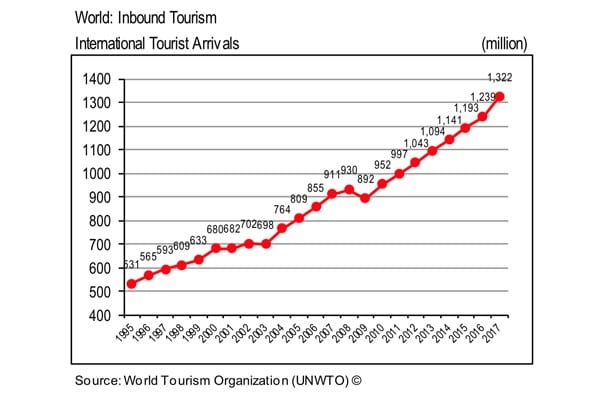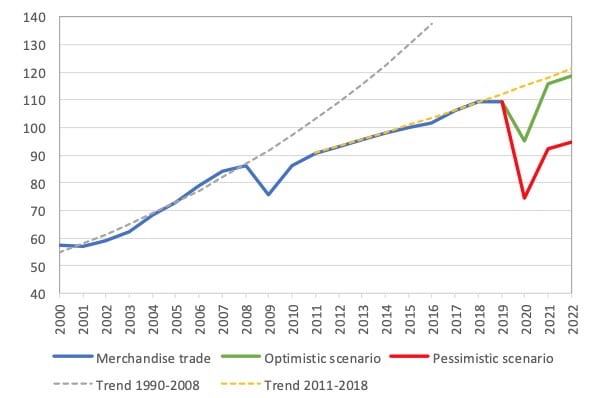Last week I heard from Jerry Kilby CCM (former CEO of the Club Managers Association of Europe) that he is relaunching his own consultancy company, Kanda Golf.
That’s why I thought to ask him how he sees the current situation and future of the golf industry.

In what areas are golf clubs lagging behind the hospitality industry?
I am not sure that golf clubs are that far behind other sectors of the hospitality industry, as most golf clubs’ food and beverage services are as good as, if not sometimes better than their local restaurant or café, but there are two aspects where I believe golf can improve considerably.
The first is customer service. Generally, I do not see golf clubs doing this as well as some hotels and restaurants. We tend to employ young people to serve our members and guests and don’t give them any training on how to meet and greet customers, how to sell your menu, how to upsell and how to handle complaints.
We tend to assume that our staff knows how to do this and we hope that they do it well. Some do, but many don’t. That’s why my colleagues and I at Kanda Golf will be providing an out-sourced staff training service to golf clubs.
The second is the facilities. I see too many golf clubs that set up their lounge/bar areas with small tables for four golfers when I see popular bars, restaurants and cocktail lounges having very different furniture and décor.
The challenge for a golf club is to choose furniture and room dividers that allow you to set up your lounge for casual drinking and dining one day and a formal dinner for 100 golfers the next, and this is not easy and must be carefully thought through.

Do you agree that golf club businesses are turning into digital businesses?
Yes – and those that aren’t will get left behind. Technology is offering golf club managers various tools to help them do their job, and frequently this is more efficient. But they are only tools and not substitutes for human interaction.
Our customers – the golfers – are connected 24/7 with smartphones, tablets, and a variety of other devices, and frequently want to engage with the golf club when the club office is closed.
A golfer enquiring about golf club membership may be doing this in the evenings after their work, and the golf club needs to use the available technology to ensure that their club responds to these enquiries when the customer wants to engage, not just when the golf club manager is sitting at their desk.
That is why we will be working in partnership with the technology leaders in this field, EnquiryBot, to help golf clubs improve this aspect of their customer interaction.
Golf clubs must use digital technology to reach out to the communities that they serve, whether that is local, regional, national or international, and social media channels are very good ways to do this, but a club manager must be selective and careful with Social Media.
Golf clubs must have a clear strategy to follow and use only those social media channels that reach their target audience.
The management of content on multiple media platforms may end up being too time-consuming and therefore very expensive to maintain.

How will the global golf tourism industry change in the coming years?
During my 34 years working in the golf industry, I have witnessed cycles of growth followed by two periods of dramatic decline, and on both occasions, the golf tourism business, along with the wider tourism business generally, came back, but in both cases, it took a couple of years to return to previous levels of business.
The first was in September 2001, when 9/11 changed the world. Air travel stopped overnight, and many countries grounded planes for weeks, even months in some cases. Golf tourism probably did not return to previous levels until early 2003, some 18 months later.
The second was a double-whammy of the eruption of the Icelandic volcano in April 2010 and the resultant cloud of ash grounding air travel for weeks and the longer-term effects of the global credit crunch of 2008/09, when no one had any money, millions became unemployed throughout Europe and there was a global depression.
Readers can see the effect of these two global incidents on the total number of international arrivals from 1995 – 2017 in the chart here from the World Tourism Organisation (UNWTO):

So, with COVID-19 being the third tourism-affecting catastrophe in recent years, I have every confidence in saying that tourism, and specifically golf tourism, will come back to the levels of business we enjoyed pre-COVID-19, but again, it may take a while.
My personal belief is that this may not be until April/May 2021 at the earliest and more likely in the winter of 2021/22.
I have been looking at the international trade forecast issued by another global organization, the WTO (World Trade Organisation) and they are forecasting the global trend for trade in the chart below:

This shows both an optimistic and pessimistic scenario for world trade in 2021 and 2022, and I believe that golf tourism may follow a similar path, but this is just my personal view.
During the next few years, it is possible that some of the numerous attractive golf destinations around the Mediterranean will struggle and individual golf courses may go into liquidation.
This gives an opportunity to a new owner to inject a new lease of life and these courses can then re-emerge and hopefully prosper.
Where do golf clubs stand in humanizing their businesses? (customer & employee experience development)
I have argued for a long time that golf clubs (as opposed to golf courses) do not humanize their key product (membership of their club) very well.
All the research I have seen says that most people who decide to join a golf club do so because of the people that are in the club – both members and staff.
I accept that some people join a golf club because of the golf course, but most do not.
This is of course a very general statement. If your course was in very poor condition, many people would not join, even if many of their friends were members there, so the golf course is still very important.
But given that 99% of golf courses are maintained well and are in good playing condition, this rarely happens.
We should be selling golf club memberships more on the human side of the benefits table:
- lifelong friendships they will make; potential business connections they will meet;
- the social fun side of golf with like-minded people and a sense of belonging to a golf club whose membership reflects the local community.
Equally, a visitor experience can be improved by better humanization, and this is where staff are so important.
The golfers’ visit to your golf course today may be their first time to your facility, and we all know that you only get one chance to make a good first impression.
Some golf courses are very good at this, but there is also good room for improvement in the many golf courses I have visited over the years.

What led you to relaunch Kanda Golf in 2020? What will you do differently than before?
For the last four years, I have been GM of a golf club in the UK, and now that has ended, and we find ourselves in very challenging economic times, I feel that many golf clubs would prefer to ‘out-source’ many services in the future, to keep their payroll costs to a minimum and bring in expertise when they need it.
Prior to me taking up the role of a golf club GM, I had already helped numerous golf clubs and club managers in the UK and throughout Europe and the Middle East.
I have now decided to focus on services such as Revenue Audits, Governance Reviews and Strategic Planning support, as these are extremely important aspects of golf club management that a club must get right if they are to navigate the turbulent times in the next couple of years and then look forward to growth in their businesses.
I also believe that staff training is very important, both on customer service skills and sales skills, and I will be working with colleagues to deliver these half-day and full-day training sessions for golf clubs whenever they would like.
I have been a salesman most of my life, and even though the product that I am selling may have changed over the years, I have learned a great deal about selling in the golf industry and I would like to pass on some of the lessons I have learned to the next generation.

What, in your opinion, is the biggest single challenge facing golf clubs today?
Effective governance, without a doubt. Making the right decision at the right time is crucial to the success of a business, and the golf industry, golf clubs, and facilities don’t do this as well as they should do.
Decision-making is frequently slow and cumbersome, missing opportunities, and incurring costs through lengthy delays.
Frequently, decisions are made at a golf facility without thinking about the consequences, or without consulting the management team who are charged with the task of implementing the decisions.
I believe that we can do his much better, and the secret is an effective governance structure in your business.
A Governance Review would look at your current decision-making structure and make recommendations for improvement, and when I have done this at golf clubs in the past, the clubs are stronger, more efficient, and more profitable than in the past.

This equally applies to the proprietary sector of golf facilities as well as the member-owned, not-for-profit sector, as I see many owners taking business decisions that adversely affect the business when a more collaborative approach to decision-making could have resulted in better decisions being made.
I also see developers and investors making very expensive mistakes when they are planning a new development, and I can guarantee that I can save developers a great deal of money when the project is still on the drawing board.
A few years ago, I saved one client approximately three million dollars on their construction costs, due to a more practical approach to decision-making about how the golf facility will be managed when it opens.
